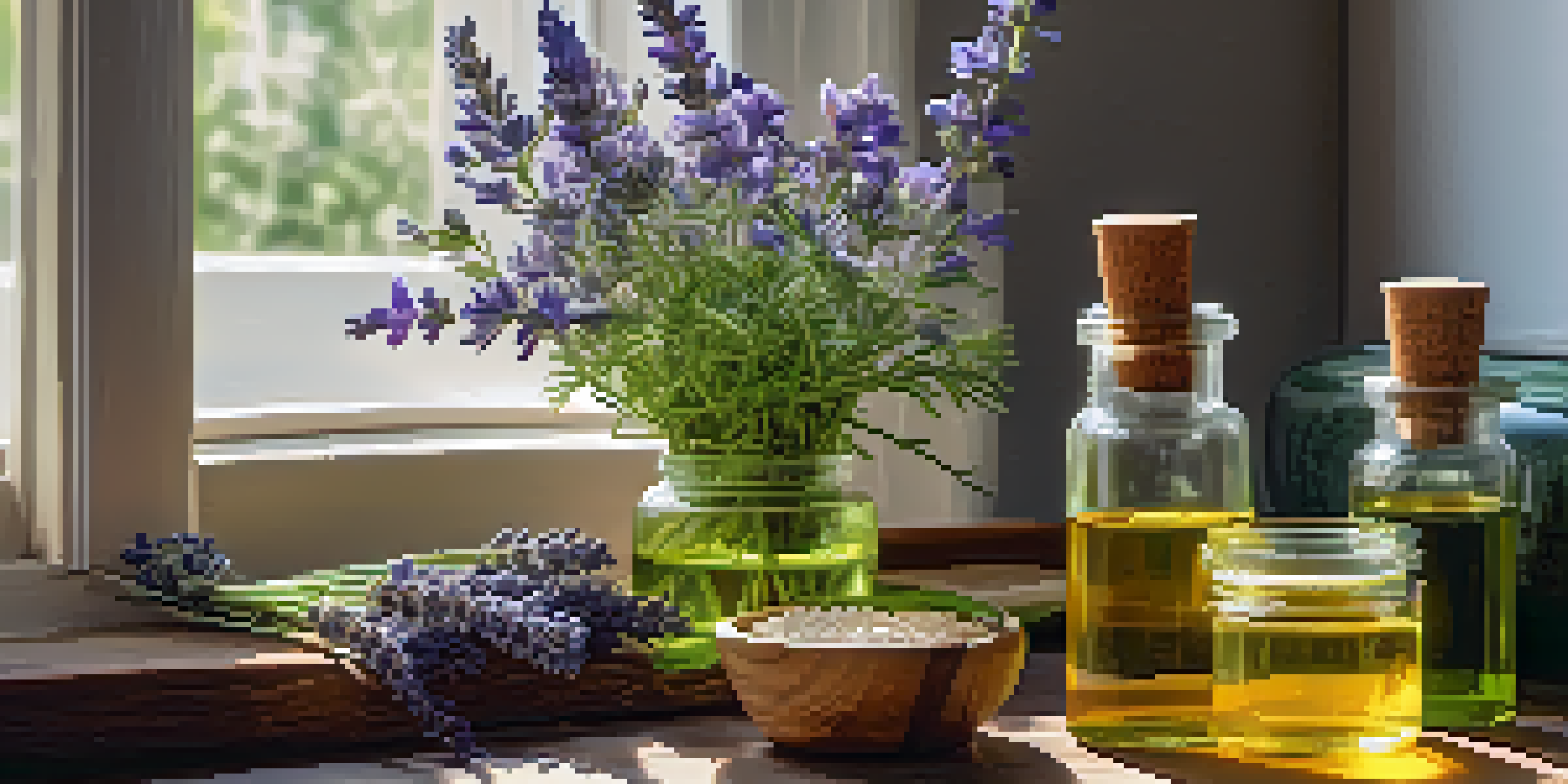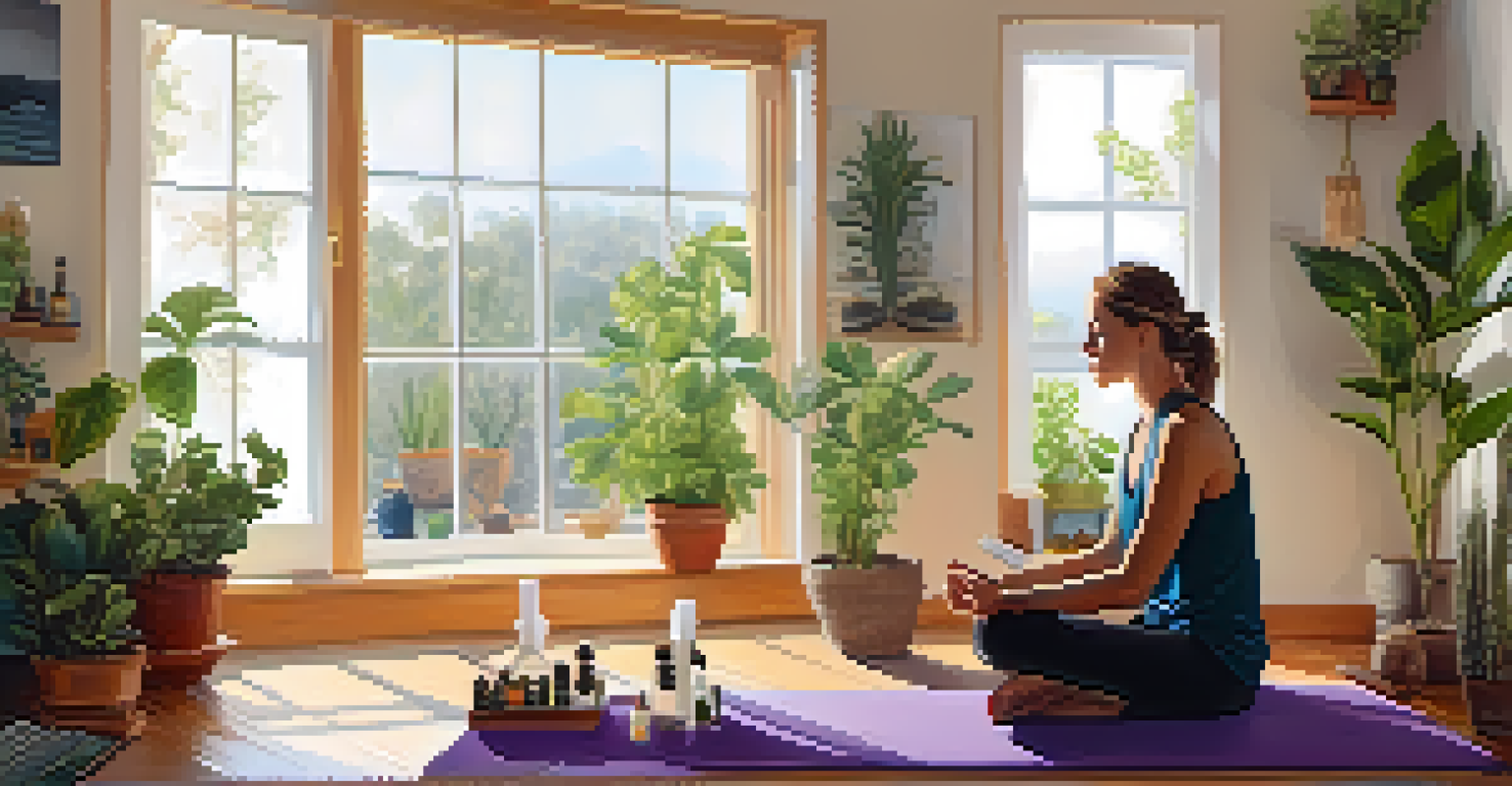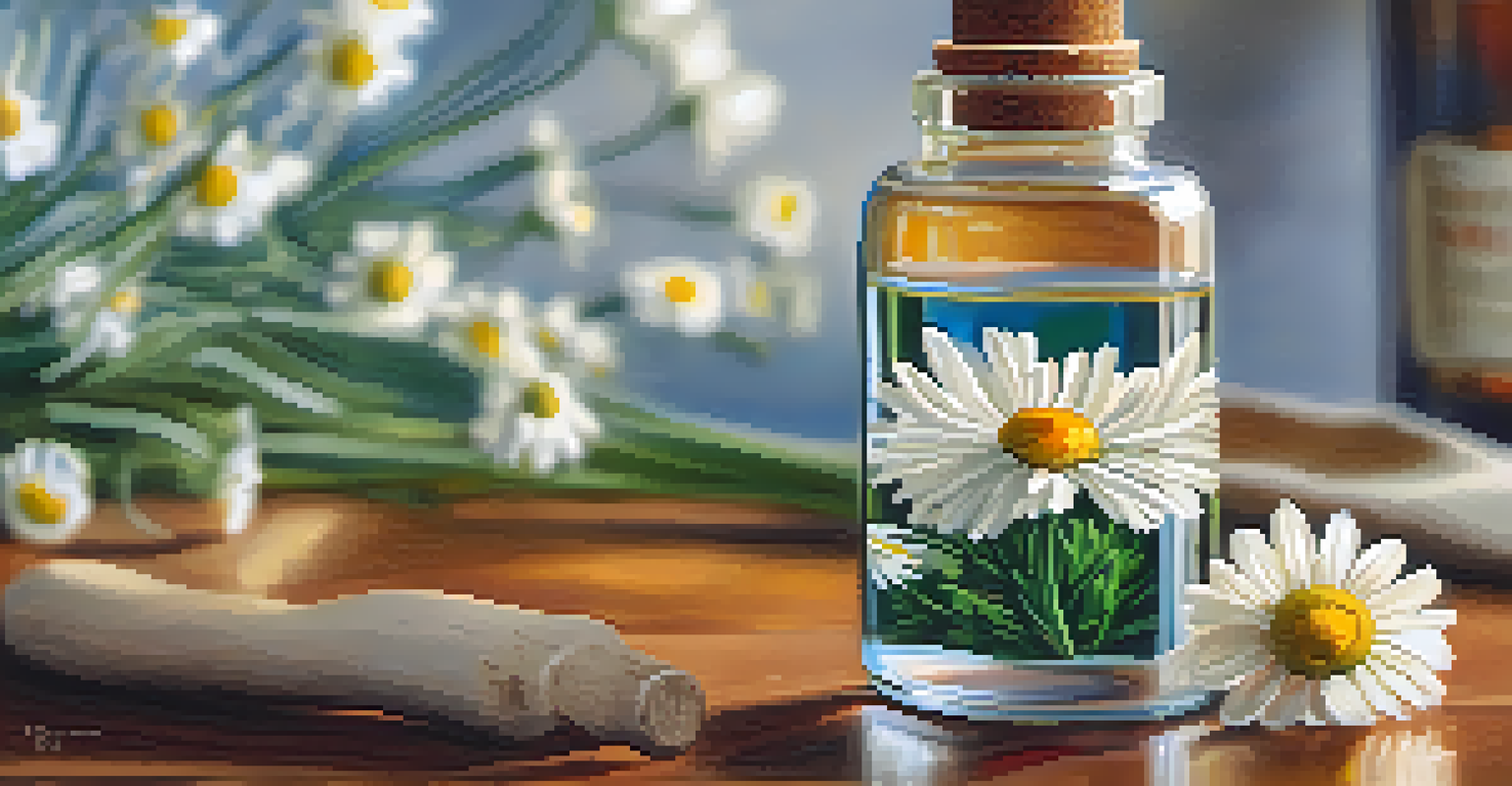Integrating Essential Oils into Homeopathy and Plant Use

Understanding Essential Oils and Their Benefits
Essential oils are concentrated extracts from plants, capturing their natural aroma and properties. They have been used for centuries in various cultures for their therapeutic benefits, including stress relief, improved mood, and enhanced physical wellness.
The greatest wealth is health.
The power of essential oils lies in their chemical compounds, which can interact with our body to promote healing. For example, lavender oil is well-known for its calming effects, while peppermint can invigorate and refresh the mind. This versatility makes them a valuable addition to holistic health practices.
When integrating essential oils into your wellness routine, consider both their aromatic qualities and their potential therapeutic effects. This understanding lays the groundwork for combining them with homeopathy and plant medicine for enhanced benefits.
The Basics of Homeopathy Explained
Homeopathy is a holistic healing system that operates on the principle of 'like cures like.' This means that a substance causing symptoms in a healthy person can be used in diluted forms to treat similar symptoms in a sick person. It's an intriguing approach that emphasizes individualized treatment.

Homeopathy uses highly diluted natural substances to stimulate the body's own healing processes. Popular remedies include arnica for bruising and belladonna for fever. Each remedy is chosen based on the individual's specific symptoms, making personalized care crucial.
Essential Oils Enhance Wellness
Integrating essential oils into your routine can promote relaxation, improve mood, and support physical health.
Understanding the foundation of homeopathy enhances your ability to integrate it with essential oils. Both practices focus on natural healing and can complement each other when used thoughtfully.
Combining Essential Oils with Homeopathic Remedies
Integrating essential oils into homeopathy can amplify the healing effects of both practices. For instance, using chamomile essential oil alongside homeopathic remedies for anxiety can create a calming atmosphere, enhancing the overall treatment experience.
Nature itself is the best physician.
However, it’s essential to consult with a qualified practitioner before mixing these approaches. Some essential oils may interfere with homeopathic remedies by counteracting their effects, so a knowledgeable guide can help you navigate this landscape safely.
By thoughtfully combining these two modalities, you can create a more comprehensive wellness strategy that supports both physical and emotional health.
Exploring the Role of Plants in Healing
Plants have been the cornerstone of medicine for thousands of years, providing a wealth of healing properties. From herbal teas to tinctures, plant-based remedies work synergistically with both essential oils and homeopathy, enhancing their benefits.
For example, echinacea is often used to boost the immune system, while ginger can aid digestion. By utilizing these plants alongside essential oils and homeopathic remedies, you can create a holistic approach that addresses multiple health concerns.
Homeopathy's Personalized Approach
Homeopathy focuses on individualized treatment, using natural substances to stimulate the body's healing processes.
Exploring the diverse array of plants available allows you to tailor your wellness routine even further, making it a personalized journey towards better health.
Safety Considerations When Blending Modalities
While the combination of essential oils, homeopathy, and plant use can be beneficial, safety should always be a priority. Some essential oils can cause allergic reactions or interact negatively with certain homeopathic remedies or medications.
To ensure safe use, always conduct a patch test for essential oils and consult with a healthcare professional, especially if you are pregnant, nursing, or have underlying health conditions. Keeping an open dialogue with a practitioner can help you avoid potential pitfalls.
By being mindful of safety, you can enjoy the myriad benefits of these natural healing methods without compromising your health.
Practical Tips for Integrating These Modalities
When starting your journey into integrating essential oils, homeopathy, and plant use, begin with small steps. Start by incorporating one essential oil into your routine, such as lavender for relaxation, while also using a homeopathic remedy that addresses your current health concerns.
Create a wellness journal to track your experiences and note how different combinations affect your well-being. This can provide valuable insights and help you refine your approach over time.
Safety Is Crucial When Combining
Always prioritize safety by consulting with professionals and conducting patch tests when blending essential oils with other remedies.
As you grow more comfortable, explore other combinations and consult with practitioners who specialize in these areas. This ongoing exploration can lead to a richer, more effective wellness practice.
Final Thoughts on Holistic Healing Practices
Integrating essential oils into homeopathy and plant use offers a promising path toward holistic healing. By understanding each modality and their interactions, you can create a personalized approach that nurtures both body and mind.
Remember, the journey to wellness is unique for everyone. What works wonders for one person may not be as effective for another, so remain open to experimentation and adjustments in your practice.

Ultimately, embracing these natural healing methods can empower you to take charge of your health and well-being in a more connected and fulfilling way.